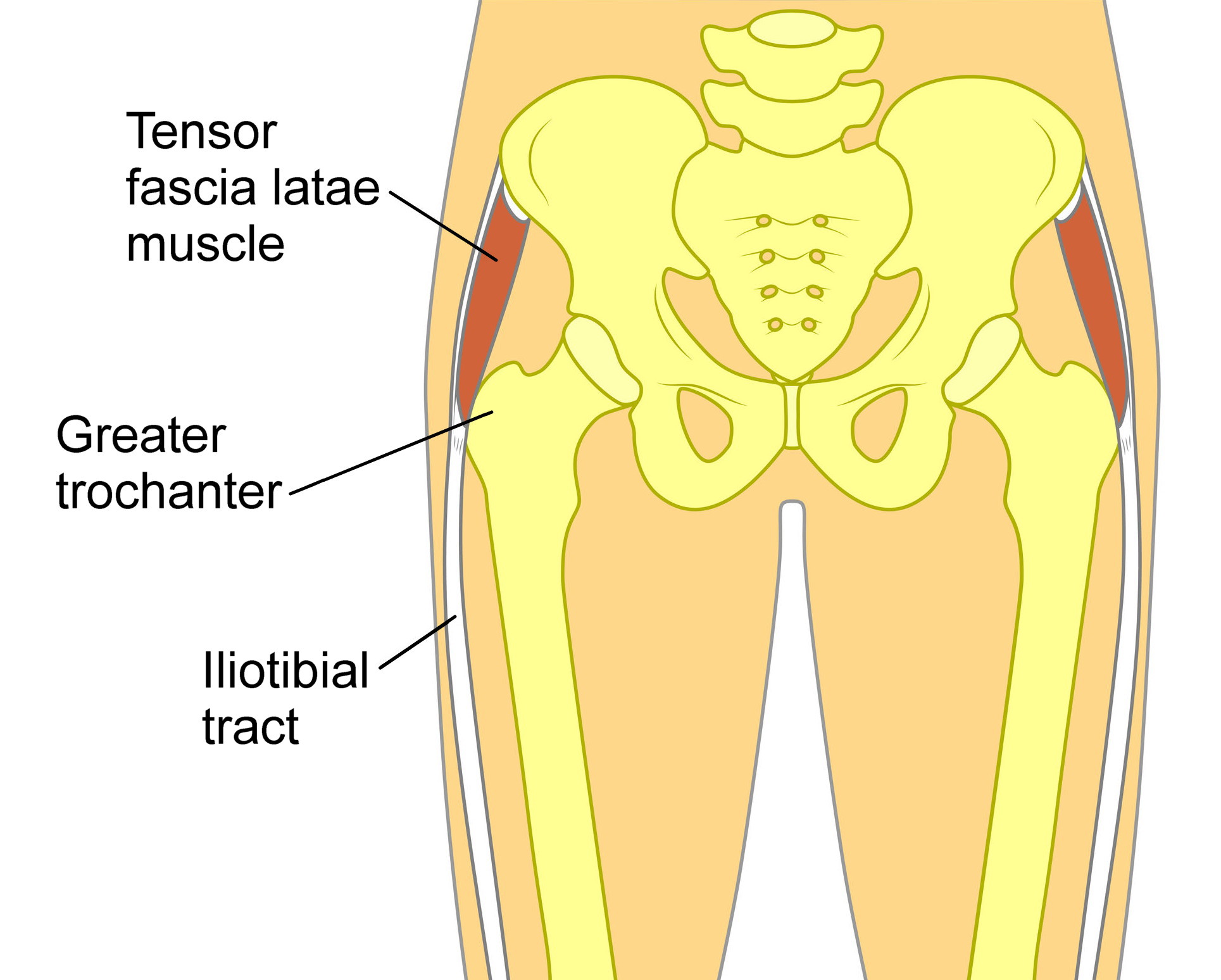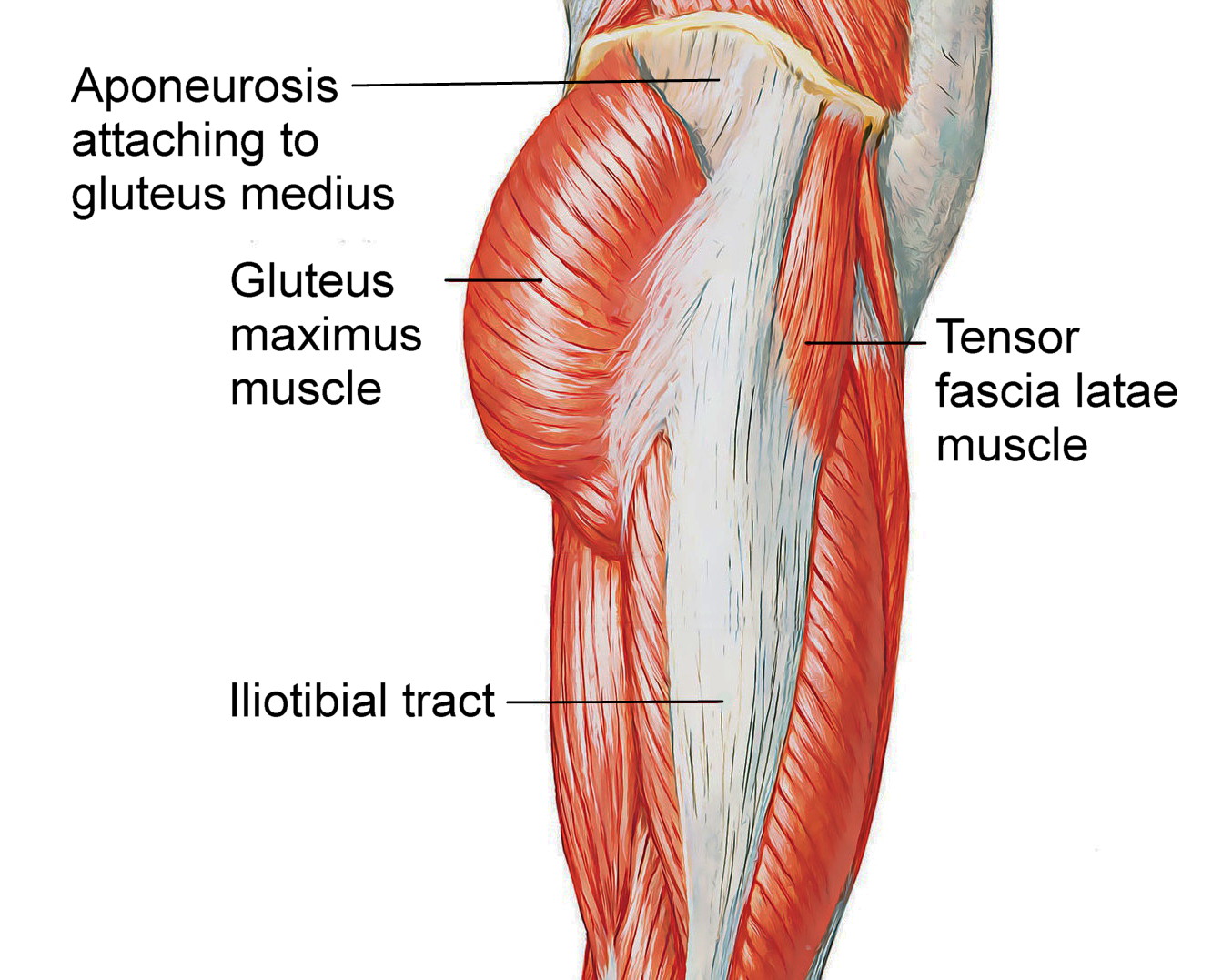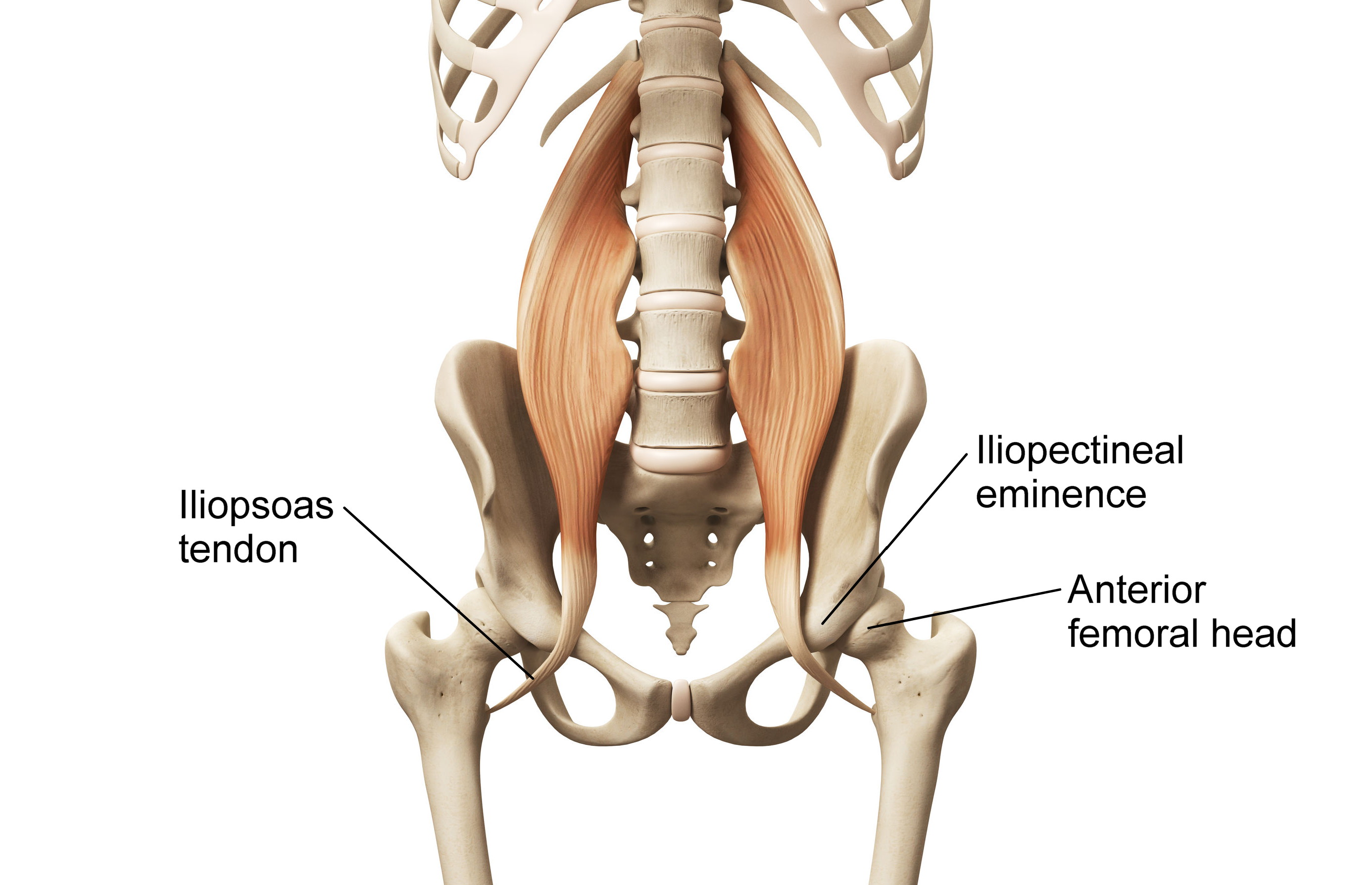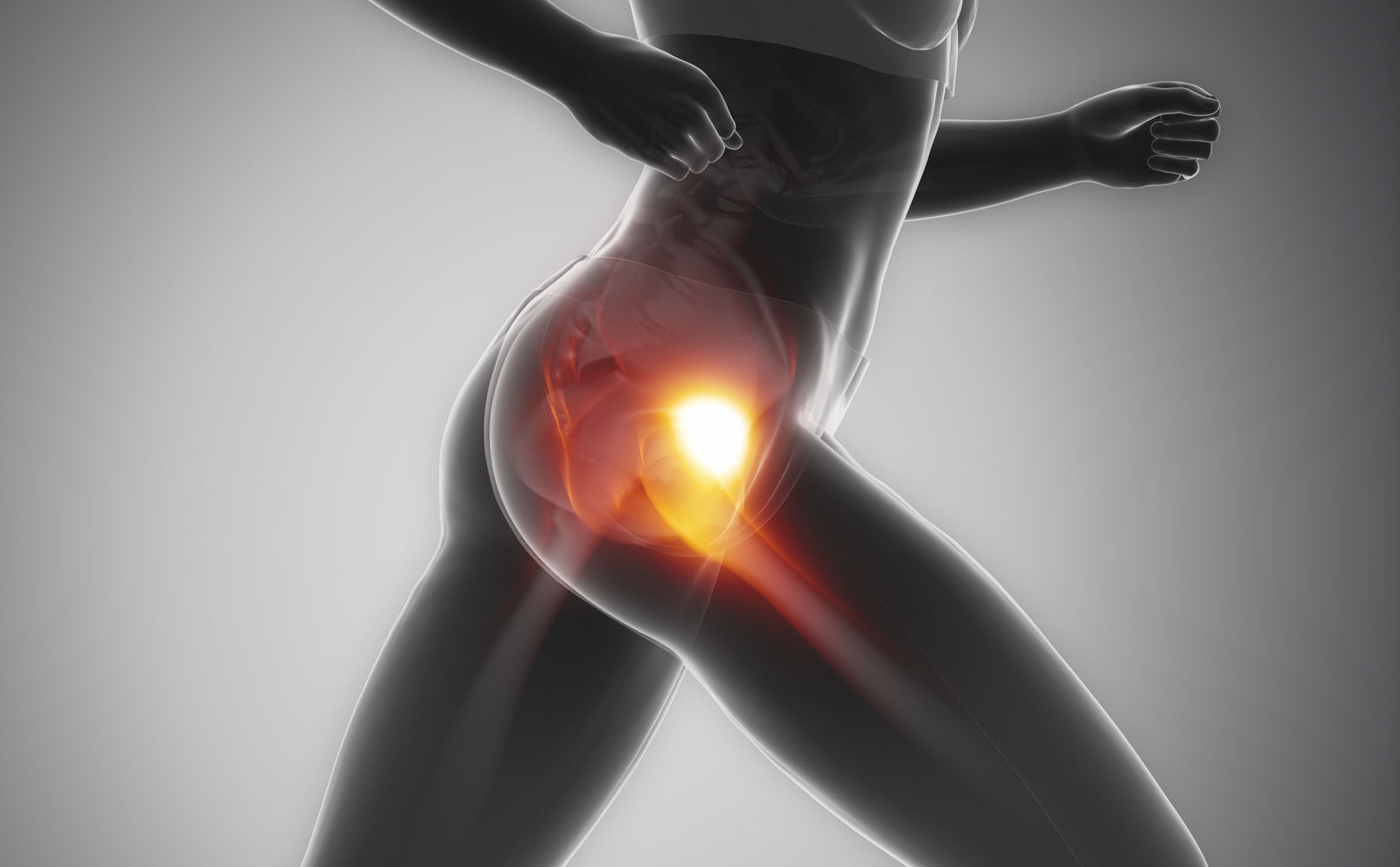What’s Causing Your Snapping Hip Syndrome?
Up to 10% of us experience snapping hip syndrome at some point in our lives. The condition is most often caused by connective tissue snapping over bone as we flex and extend the hip joint.
For some people, snapping hip is painless and simply annoying, but for others it can involve a great deal of pain, inflammation, and other related problems. The good news is that most cases of snapping hip syndrome are the result of chronically tight muscles: Tight muscles pull on tendons and connective tissue, creating the tension that results in snapping hip. And we know how to release chronically tight muscles—by pandiculating them!
In this post, we’ll learn all about the three different types of snapping hip syndrome and the best ways to alleviate them.
What is Snapping Hip Syndrome?
Snapping hip syndrome, or coxa saltans, is defined as a snapping sensation felt when the hip is flexed (the knee is brought forward toward the stomach) or extended (the knee is brought downward and the hip joint is straightened). The snapping is sometimes audible, and can be painless or accompanied by pain and other symptoms.
While up to 10% of the general population experiences snapping hip, the condition is much more common among athletes who do a great deal of hip flexion and extension, including dancers, runners, gymnasts, and soccer players.
There are three types of snapping hip syndrome:
- External: This is the most common type, caused by the iliotibial band snapping over the greater trochanter of the femur bone.
- Internal: Known as dancer’s hip, this type is caused by the iliopsoas tendon snapping over bony structures in the hip.
- Intra-articular: This type is not caused by tight muscles and connective tissue; instead, it is caused by injury to the hip joint or bone fragments trapped in the joint.
External Snapping Hip Syndrome
When the hip is in extension, the iliotibial band lies behind the greater trochanter. When the hip is brought into flexion (bringing the knee forward toward the stomach) the iliotibial band moves forward over the greater trochanter.
The iliotibial band is connected to three muscles: the tensor fascia latae, the gluteus maximus, and the gluteus medius (through an aponeurosis, a flat fibrotendinous tissue). Tightness in any of these three muscles will pull on the iliotibial band, making it taut and causing it to snap over the greater trochanter when moving between extension and flexion.


Internal Snapping Hip Syndrome
When the iliopsoas is chronically tight, it pulls the iliopsoas tendon taut, causing internal snapping hip syndrome.
When the hip is in extension, the iliopsoas tendon lies medial (toward the center of the body) in relation to the femoral head and iliopectineal eminence (see diagram below).
When the hip is flexed, abducted (when the leg moves out to the side, away from the body), or externally rotated (turned outward like a ballet dancer), the iliopsoas tendon moves laterally (away from the center of the body) over the femoral head and iliopectineal eminence.
This movement pattern is the most commonly recognized cause of internal snapping hip syndrome. However, there can be other hip structures involved in the condition as well, including the iliopsoas bursa, the iliacus muscle, and the iliofemoral ligament.

Position of iliopsoas tendon when the hip is in extension
Intra-articular Snapping Hip Syndrome
Injury, wear and tear, or growth of bone spurs in the hip joint can cause structural damage that produces symptoms similar to internal snapping hip syndrome, including snapping or locking up of the hip joint, pain, and inflammation. These types of structural damage include:
- Injury to the articular cartilage that lines the ball and socket of the hip joint
- A tear in the labrum, the cartilage that forms a ring around the hip socket
- Fragments of broken bone that become trapped in the hip joint
Symptoms and Risks
While snapping hip syndrome can be painless and have no lasting negative symptoms, it can also be quite painful and lead to further issues. These issues include:
- Inflammation of muscles, tendons, and connective tissue
- Swelling
- Leg muscle weakness
- Difficulty getting up out of a chair or walking
- Feeling that the hip is dislocated
- Trochanteric bursitis (with external snapping hip syndrome)
- Iliopsoas bursitis (with internal snapping hip syndrome)
In addition, both internal and external snapping hip syndrome are commonly experienced along with functional leg length discrepancy, due to chronic tightness in the muscles in and around the hip.
Diagnosis and Common Treatments
After reading the descriptions above, you may know exactly what’s causing your symptoms. You can see your doctor to get an official diagnosis of external or internal snapping hip syndrome, if you wish. Your doctor may prescribe rest, ice, anti-inflammatory medication, stretching, or physical therapy. However, as you’ll learn in the next section, none of these treatments address the underlying cause of the condition: the level of chronic muscle tension that’s being set by your nervous system.
If you’re concerned that structural damage to your hip joint may be the cause, you should see your doctor to get imaging done. As with external and internal snapping hip, your doctor may prescribe rest, ice, anti-inflammatory medication, stretching, or physical therapy. In some cases of intra-articular snapping hip, cortisone injections or surgery may be recommended.
Why Clinical Somatics is the most effective way to relieve snapping hip
The movement and level of contraction of our muscles is controlled by our nervous system. The way that our muscles move, and how much we keep them contracted, is actually learned over time by our nervous system.
Our nervous system learns certain ways of using our muscles based on how we choose to stand and move each and every day. Our nervous system notices the postures and movements that we tend to repeat, and it gradually makes these postures and movements automatic so that we don’t have to consciously think about them.
This learning process—that of developing what we refer to as muscle memory—allows us to go through the activities in our daily lives easily and efficiently. Unfortunately, if we tend to repeat harmful postures or movements our nervous system will learn those too. Our automatic neuromuscular learning process doesn’t discern what is good or bad for us—it just notices what we tend to repeat, and makes it automatic.
So if you flex, abduct, or rotate one or both hips over and over, your hip muscles can easily become chronically tight, leading to snapping hip syndrome.
As your nervous system gradually learns to keep your muscles tight, gamma loop activity adapts. This feedback loop in your nervous system regulates the level of tension in your muscles. As your brain keeps sending the message to contract your muscles, gamma loop activity adapts and starts keeping your muscles tight all the time. Meanwhile, your proprioception (your internal sense of your posture, muscle tension, and movement) adapts so that you’re not aware of the increased level of tension in your muscles.
Static stretching doesn’t have any lasting effect on muscle tension because it does not change the learned messages that your brain is sending to your muscles to stay tight. It can even make your muscles tighter by activating your stretch reflex. Physical therapy exercises may involve strengthening, which can make tight muscles even tighter.
Clinical Somatics uses a movement technique called pandiculation that gently contracts and releases muscles, sending accurate biofeedback to the nervous system about the level of tension in the muscles. This allows for retraining of learned muscular patterns and resetting of gamma loop activity. Pandiculation is by far the most effective and efficient way to release chronic muscle tension and retrain posture and movement. To learn more about pandiculation, read this post.
Clinical Somatics exercises that relieve Snapping Hip Syndrome
Both external and internal snapping hip syndrome are most often functional—simply caused by the way we use our bodies. Luckily, we can change how we use our bodies and reduce our resting level of muscle tension with neuromuscular re-education.
I had internal snapping hip syndrome in my right hip for many years after quitting dance. While my iliopsoas was extremely tight on both sides, I only ever had snapping hip on my right side. It took me a while to realize that this was because my external rotators were very tight on my right side, and not nearly as tight on my left. I was also hiking my right hip up. So, my process of relieving my snapping hip involved doing Clinical Somatics exercises to release my iliopsoas, my gluteal muscles, and even my lower back and waist muscles on my right side—like most muscular patterns, mine started in the core of my body.
Below I’ve listed specific exercises from my online Level One and Level Two Courses that directly address external and internal snapping hip syndrome. However, keep in mind that we all have full-body patterns of muscular tension that lead to our muscle and joint pain, so it is always worthwhile to learn and practice all of the exercises in the courses.
When one side of your body is considerably tighter than the other, it can be very beneficial to practice these exercises more or solely with your tighter side—this allows you to gradually even out imbalances in your muscle tension, posture, and movement patterns.
Exercises for External Snapping Hip Syndrome
From Level One:
- Back Lift: to release the lower back and gluteals
- Side Curl: to release the muscles of the waist, which are often tight in this condition
- Hip Rotation: to release both the internal and external hip rotators
From Level Two:
- Gluteal Release: to release the gluteal muscles and tensor fascia latae
- Iliotibial Band Release: to release the tensor fascia latae and iliotibial band
Exercises for Internal Snapping Hip Syndrome
From Level One:
- Arch & Flatten, Arch & Curl, One-sided Arch & Curl, and Diagonal Arch & Curl: to release the lower back and abdominals, and to gently release the iliopsoas
- Back Lift: to release the lower back and gluteals
- Side Curl: to release the muscles of the waist
- Iliopsoas Release: to release the iliopsoas. As instructed, you must keep your back completely flattened throughout the movement, until you’ve lowered your leg all the way to the floor. If you’re not able to keep your back flattened, practice the first version of the movement (with working leg bent) until you are able to keep your back strongly flattened into the floor throughout the release.
- Hip Rotation: to release the internal and external hip rotators. You may want to focus more on the External Hip Rotator Release, depending on your pattern of tension.
- Hip Slides and Hip Raises: to release your waist muscles, and to compare the differences between your hips
From Level Two:
- Gluteal Release: to release the gluteus maximus
- Lower Back Release: to gently release the lower back
References:
Via, A.G.; Fioruzzi, A.; and Randelli, F. (2017) “Diagnosis and Management of Snapping Hip Syndrome: A Comprehensive Review of Literature.” Rheumatology (Sunnyvale) 7 : 228.
Recommended reading:
The Pain Relief Secret: How to Retrain Your Nervous System, Heal Your Body, and Overcome Chronic Pain by Sarah Warren, CSE
Somatics: Reawakening the Mind’s Control of Movement, Flexibility and Health by Thomas Hanna

